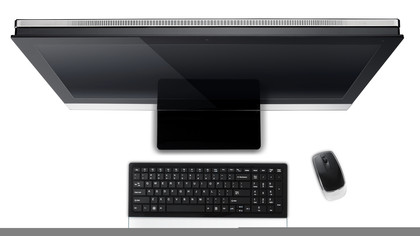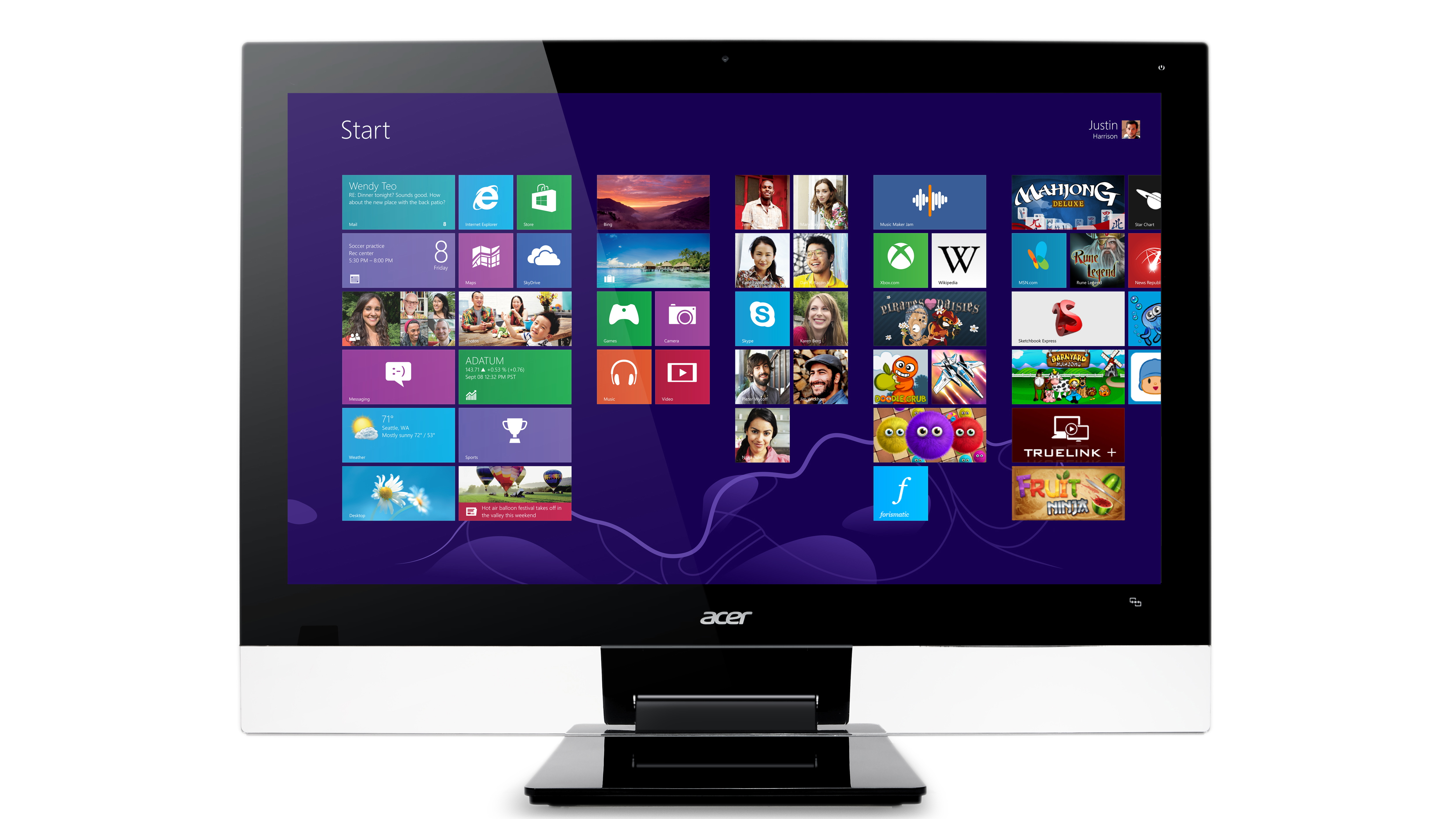Why you can trust TechRadar
In the configuration we received (A7600U-UR308), the Aspire has the following core specs:
•CPU: Dual-core 2.5GHz Core i5 3210M•Video: GeForce GT 640M•Memory: 8GB DDR 3 RAM•Storage: 5400RPM 1TB drive•Optical: Blu-Ray combo drive
Like most AIOs, the 7600U is not configurable or customizable, but there are a few different models (A7600U-UR12, A7600U, UR-11) that step up the CPU to a dual-core 2.6GHz Core i5 3230M processor. There are also lower-powered configurations in the $1,000.00 price range that step the CPU way down to a Core i3 CPU.

On the left side of the screen, you'll find two USB 3.0 ports, mic in and mic out, and a universal card reader. On the back of the system, you'll find two HDMI in ports, one HDMI out port, a SPDIF optical audio out port, a Gigabit Ethernet jack, and two USB 2.0 ports.
A Blu-Ray drive can be found on the right side of the system, and a standard resolution webcam is placed in the usual location.
The 7600U ships with a Bluetooth 4.0 adapter. It does not come with a TV card.
Performance
Here's how the Aspire 7600U fared in our standard AIO benchmarks:
3DMark 06: 10,612Cinebench 10 single core: 4,893Cinebench 10 multi-core: 10,260Boot Time: 26 seconds, (+10 seconds post log-in)Call of Duty 4: 94.1 fps
As you've probably gathered, this isn't a very fast system in terms of day to day performance… and at the just-under $2,000 price point, feels sorely underpowered.
Sign up to the TechRadar Pro newsletter to get all the top news, opinion, features and guidance your business needs to succeed!
The biggest weak spot here is the under-powered Core i5 3210M processor. It just doesn't have enough gas for CPU-intensive applications and functions. It's fine for watching movies and videos, but it's not the kind of system you'd want to use for putting together home movies.
Here's a reality check. In our Cinebench 10 test, which wages a relentless attack on a system's processor, a single-core of this Aspire All in One trailed the 27-inch iMac by a little under 20%. That's not great, but in Cinebench's multi-core test, Acer's Core i5 gets crushed, with a score of 10,260 compared to the 22,404 thrown down by the iMac's Core i7 processor.
More concerning is that at the same price point, you can get your hands on a 3.4GHz quad-core Core i7 processor in Apple's 27-inch iMac, or a 2.7GHz quad-core Core i5-3330S in Dell's XPS One 27. That's a problem.
Also a problem: The Aspire 7600U's pokey 5400RPM hard drive. Yes, it's huge at 1TB of total storage. But the slow spin rate means sluggish data access rates, slower start times, and more. And, when you look at the specs (and performance) of the iMac and Dell XPS All in One mentioned above, you'll find 7800RPM drives or hybrid drives at the same price point.
The Aspire's saving grace is that, because it has a high-end Kepler-based GeForce GT 640M graphics part, it holds up surprisingly well for gaming. We were even able to play Borderlands 2, although more CPU-intensive games may bog it down. Still though, provided you don't mind turning some of the details (and possibly the resolution) down, you can actually play games on this system.
Unfortunately, in terms of day-to-day performance, this system actually feels worse than our benchmark numbers indicate. It's slow to start up, require 36 seconds to go from power on to completely logged in. It stutters coming out of sleep mode, which is frustrating. Switching between users feels like it takes forever in comparison to other Windows 8 systems. There are occasional hiccups when launching the web browser. And so on.
A faster hard drive and a faster Core i7 processor would not only have made a big difference here, they would make this system's $1900 price tag feel appropriate.
